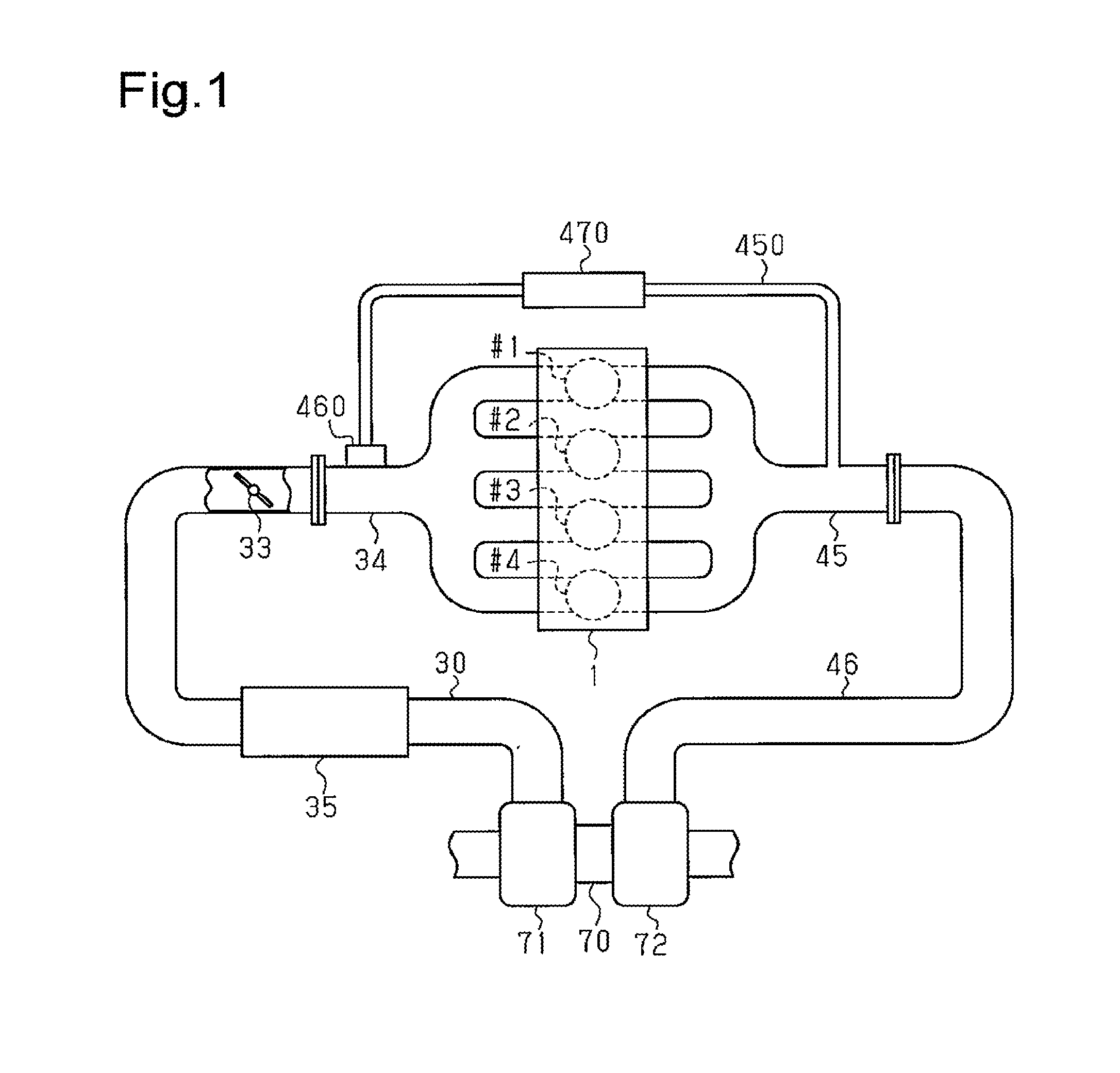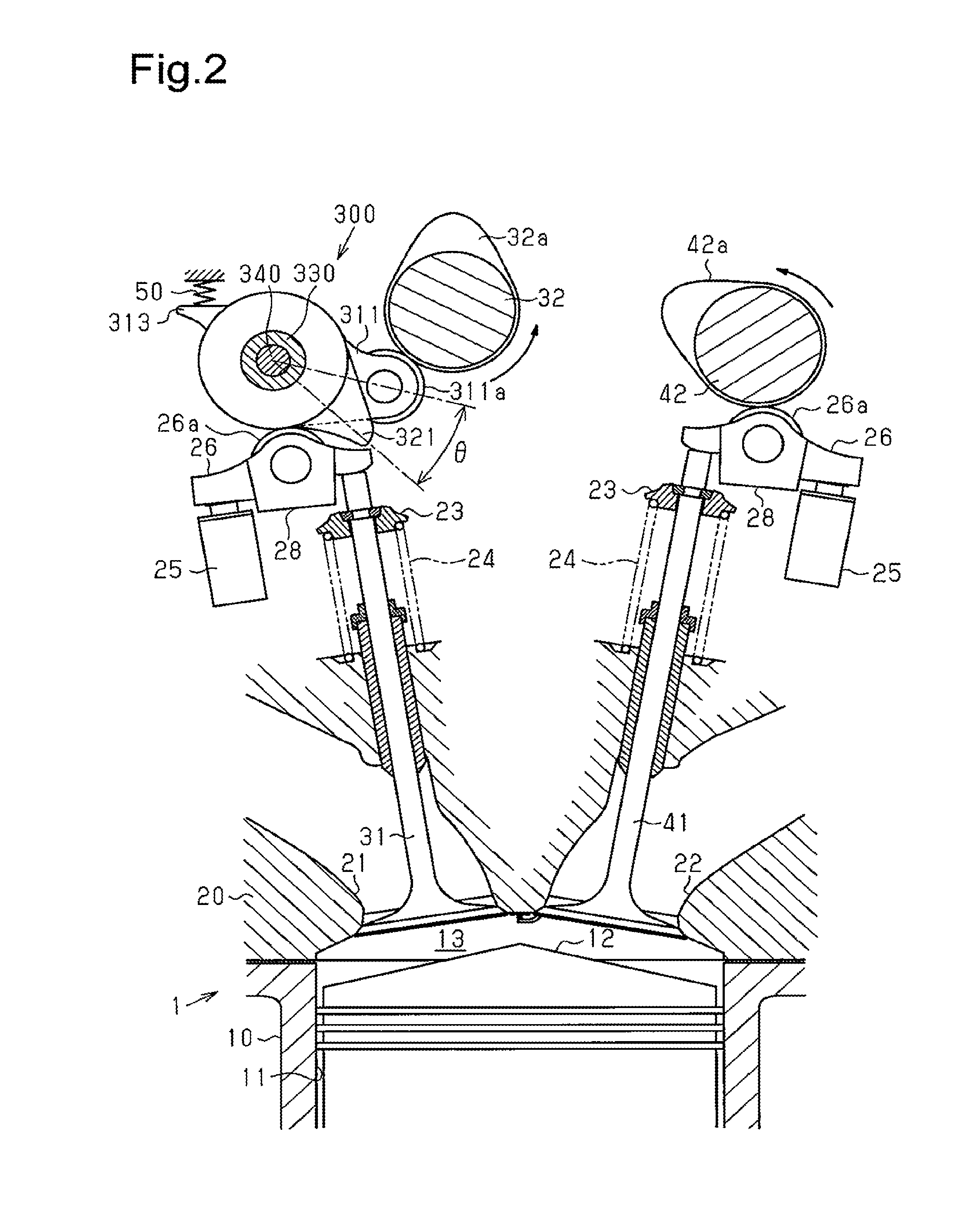Controller for variable valve mechanism
a variable valve and control mechanism technology, applied in the direction of electric control, machines/engines, output power, etc., can solve the problem of engine output fluctuation, and achieve the effect of reducing the number of engine output changes
- Summary
- Abstract
- Description
- Claims
- Application Information
AI Technical Summary
Benefits of technology
Problems solved by technology
Method used
Image
Examples
Embodiment Construction
[0037]A controller for a variable valve actuation mechanism according to one embodiment applied to an inline four-cylinder engine will now be described with reference to FIGS. 1 to 11.
[0038]As shown in FIG. 1, an engine 1 includes four cylinders arranged in series, which are, a first cylinder #1, a second cylinder #2, a third cylinder #3, and a fourth cylinder #4.
[0039]The engine 1 also includes fuel injection valves, which inject fuel into the cylinders. Furthermore, an intake manifold 34, which introduces intake air into the cylinders, and an exhaust manifold 45, which discharges exhaust gas from the cylinders, are connected to the engine 1.
[0040]The intake manifold 34 is connected to an intake passage 30. A throttle valve 33, which regulates the intake air amount, is located in the intake passage 30.
[0041]The exhaust manifold 45 is connected to an exhaust passage 46.
[0042]The engine 1 includes a forced induction device for increasing the pressure of intake air using exhaust gas. ...
PUM
 Login to View More
Login to View More Abstract
Description
Claims
Application Information
 Login to View More
Login to View More - R&D
- Intellectual Property
- Life Sciences
- Materials
- Tech Scout
- Unparalleled Data Quality
- Higher Quality Content
- 60% Fewer Hallucinations
Browse by: Latest US Patents, China's latest patents, Technical Efficacy Thesaurus, Application Domain, Technology Topic, Popular Technical Reports.
© 2025 PatSnap. All rights reserved.Legal|Privacy policy|Modern Slavery Act Transparency Statement|Sitemap|About US| Contact US: help@patsnap.com



